Dossier
Île-de-France Mobilités:
mobility transformed
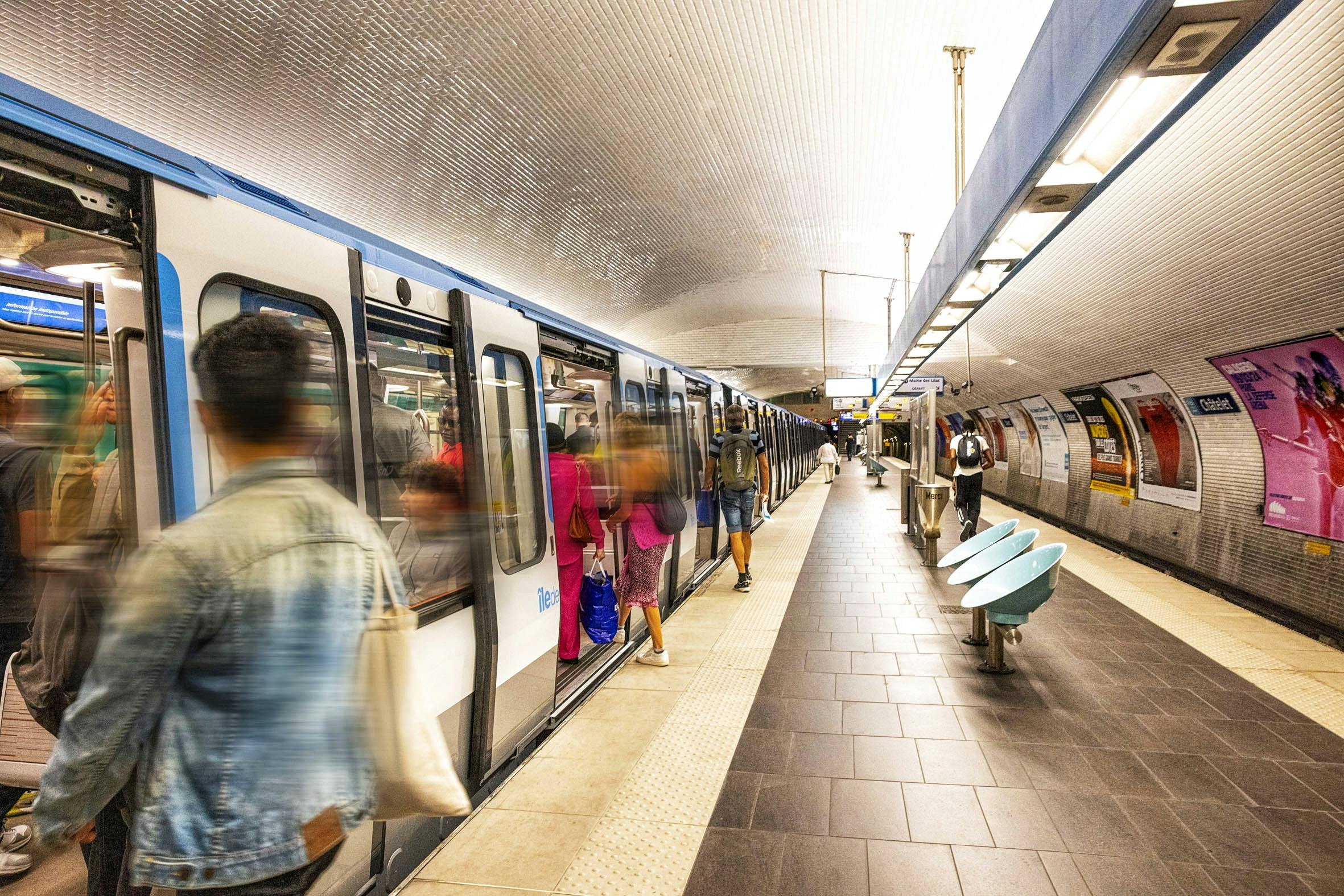
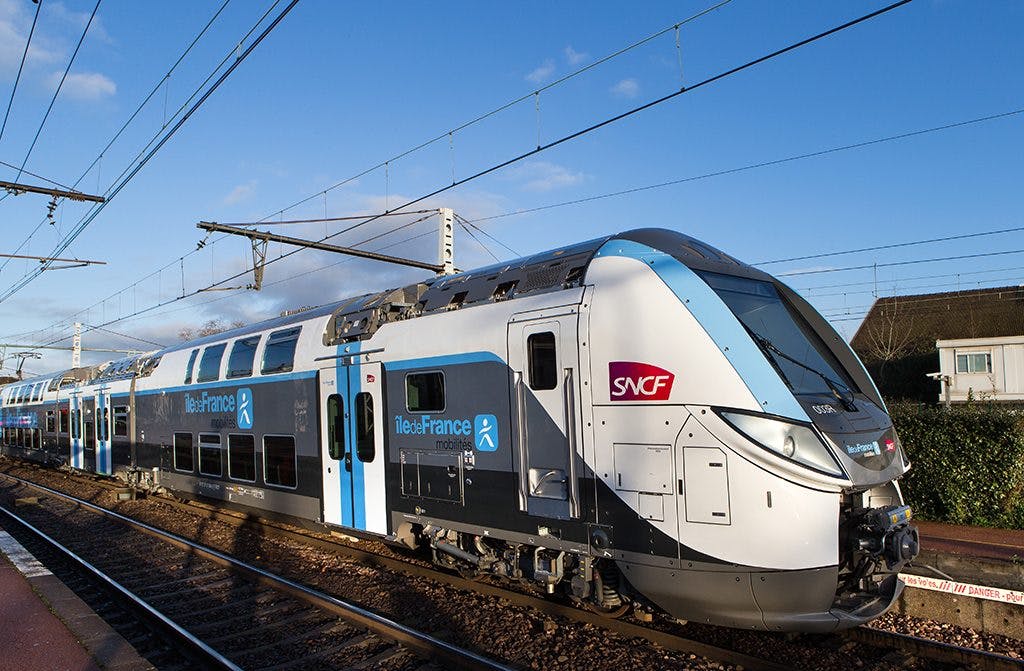
Each year, Île-de-France Mobilités devotes more than three billion euros to transforming your travel experience
These massive investments are dedicated in particular to the purchase and refurbishment of trains, metros, buses and trams to ensure a service that is not only modern and safe, but also reliable and comfortable.
Every day, Île-de-France Mobilités works to enable environmentally friendly travel, integrating clean technologies and innovative designs that make each journey safer and more reliable and that is accessible to everyone.
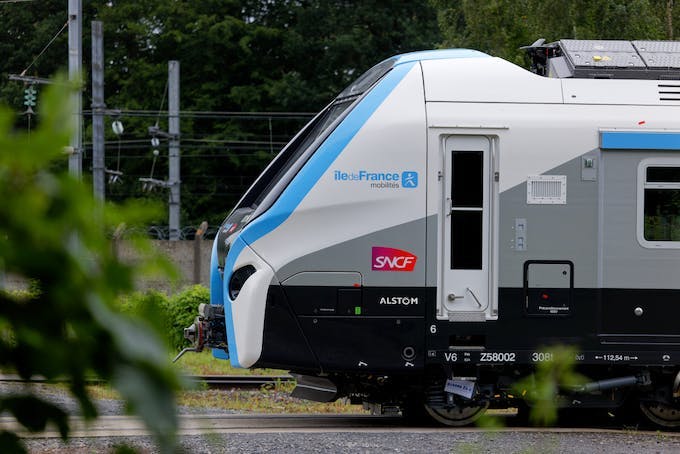
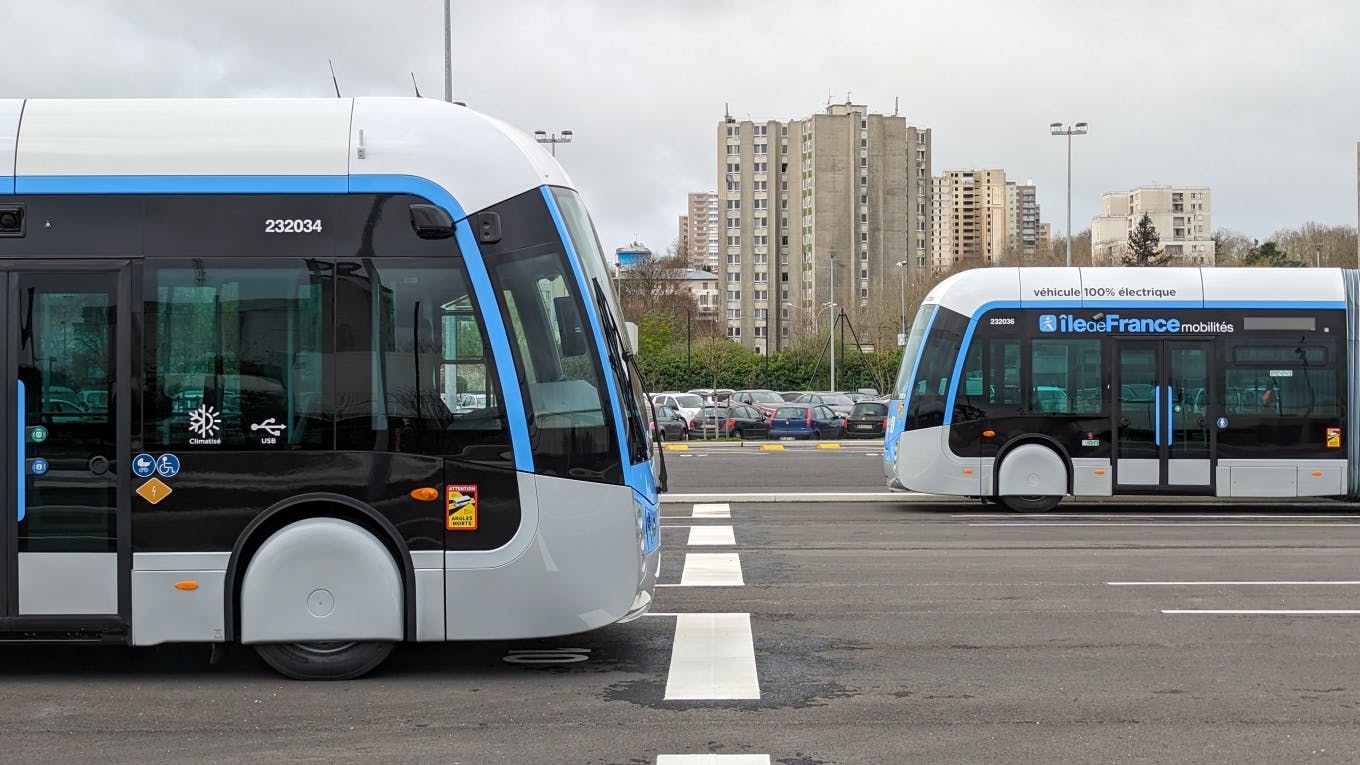
New rolling stock
In 2024, Île-de-France Mobilités plans to invest nearly three billion euros in new trains, buses, trams and metros to improver comfort, reliability and durability.
“By 2030, 73 billion euros will have been spent on new, accessible trains with video surveillance, more clean buses everywhere, extensions and new lines, as well as transport on demand for rural areas. The metro network will double in size!”
Valérie Pécresse, President of Île-de-France Mobilités and the Paris Region
RER NG and MF19: a look at two new trains that will change the way people travel in the region
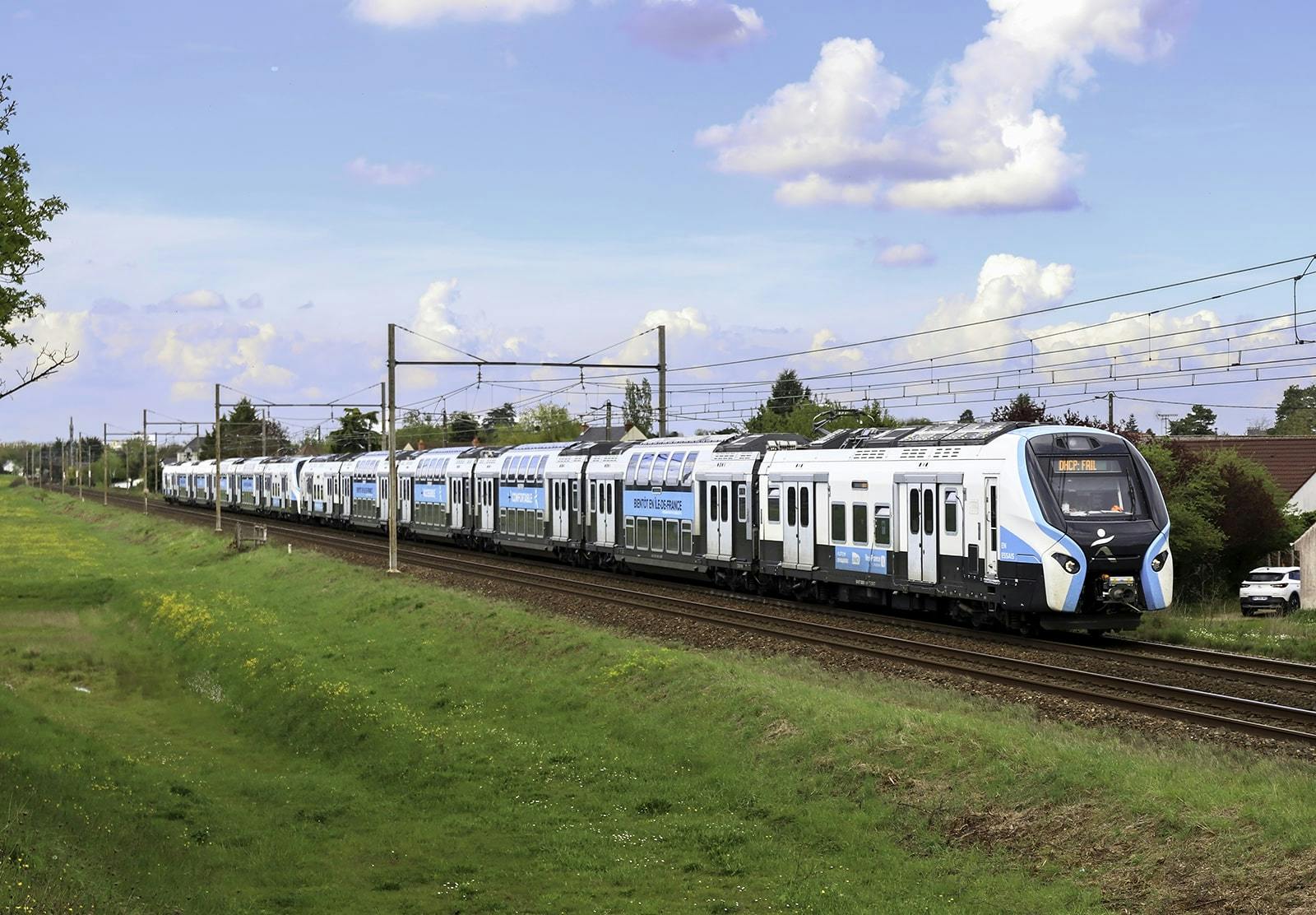
RER NG: the RER of the future is here
Reliable, safe, comfortable and specially designed for dense urban areas, the RER New Generation (NG) has been running on RER Line E since the end of 2023. At the end of 2024, it will also run on RER Line D.
The RER NG: new high-capacity trains to improve the level of comfort offered to Ile-de-France residents and reliability on these two lines.
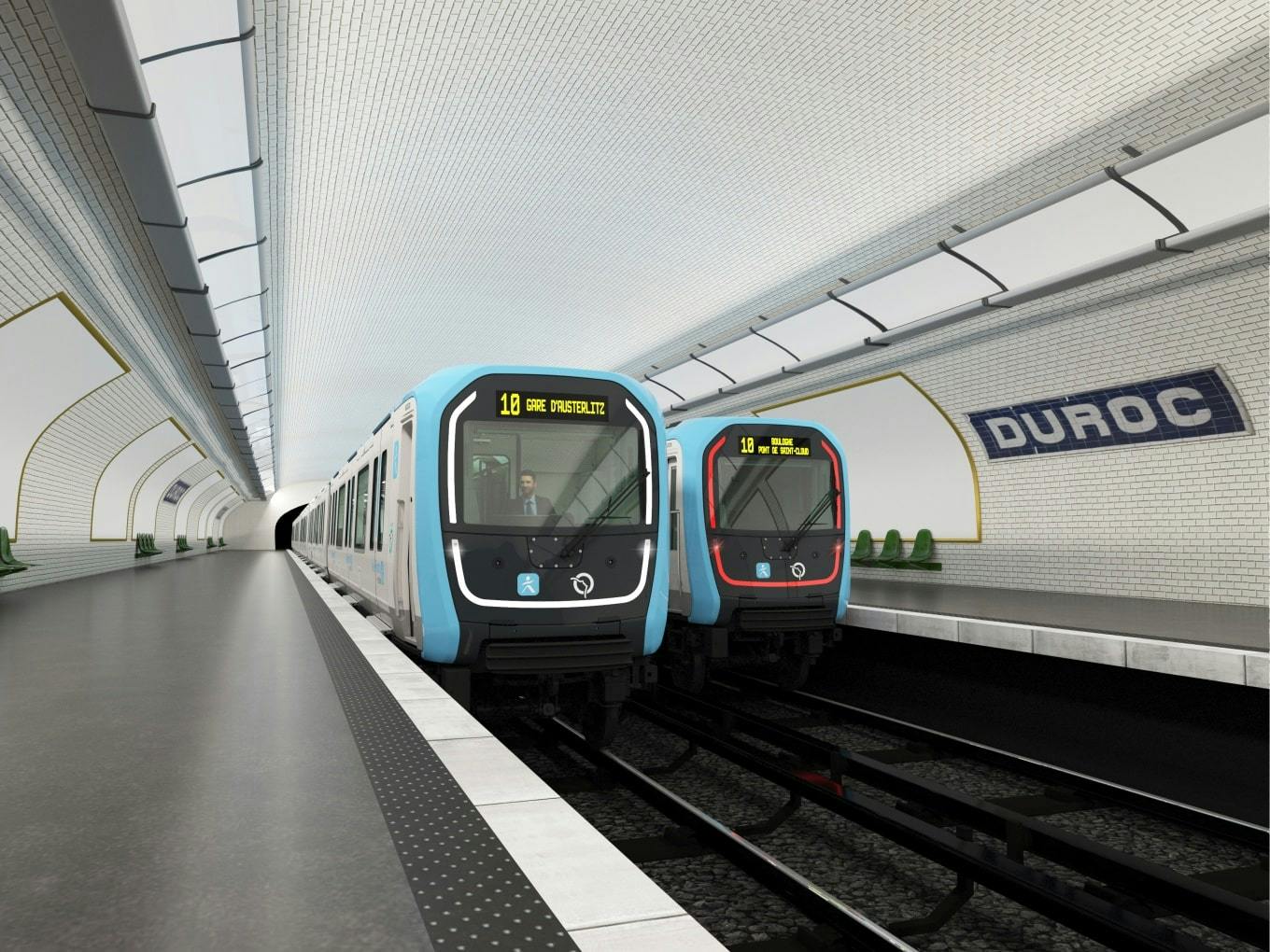
MF19: the Parisian metro reinvented
From 2025, a new metro train will enter service on Lines 3, 3bis, 7, 7bis, 8, 10, 12 and 13. Accessible, reliable and incredibly versatile, the MF19 brings technology to passenger comfort.
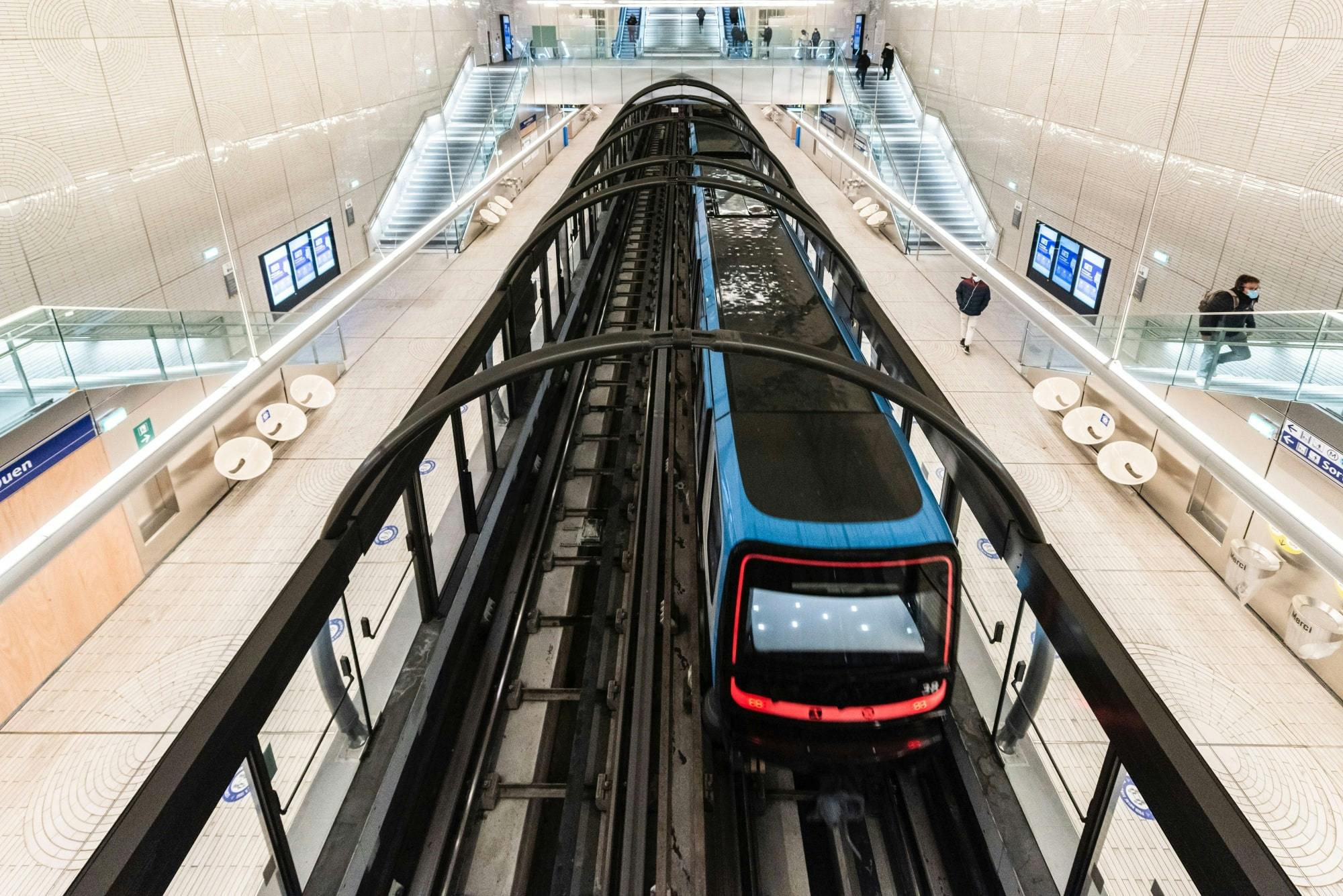
Automatic metros, greater efficiency and improved reliability
By converting metros to automatic operation, Île-de-France Mobilités aims to increase efficiency and reliability on the network.
This automation is at the cutting edge of innovation. It operates on several levels, ranging from driver assistance to a fully automated system, without a driver on board.
Île-de-France Mobilités also plans to extend this advanced technology to the new Paris region metro network and is considering the automation of existing lines for a future where travel will be smoother, more regular and on time.
After Lines 1 and 14, it is now the turn of Line 4 to be fully automated - a conversion which took place without halting the operation of the line.
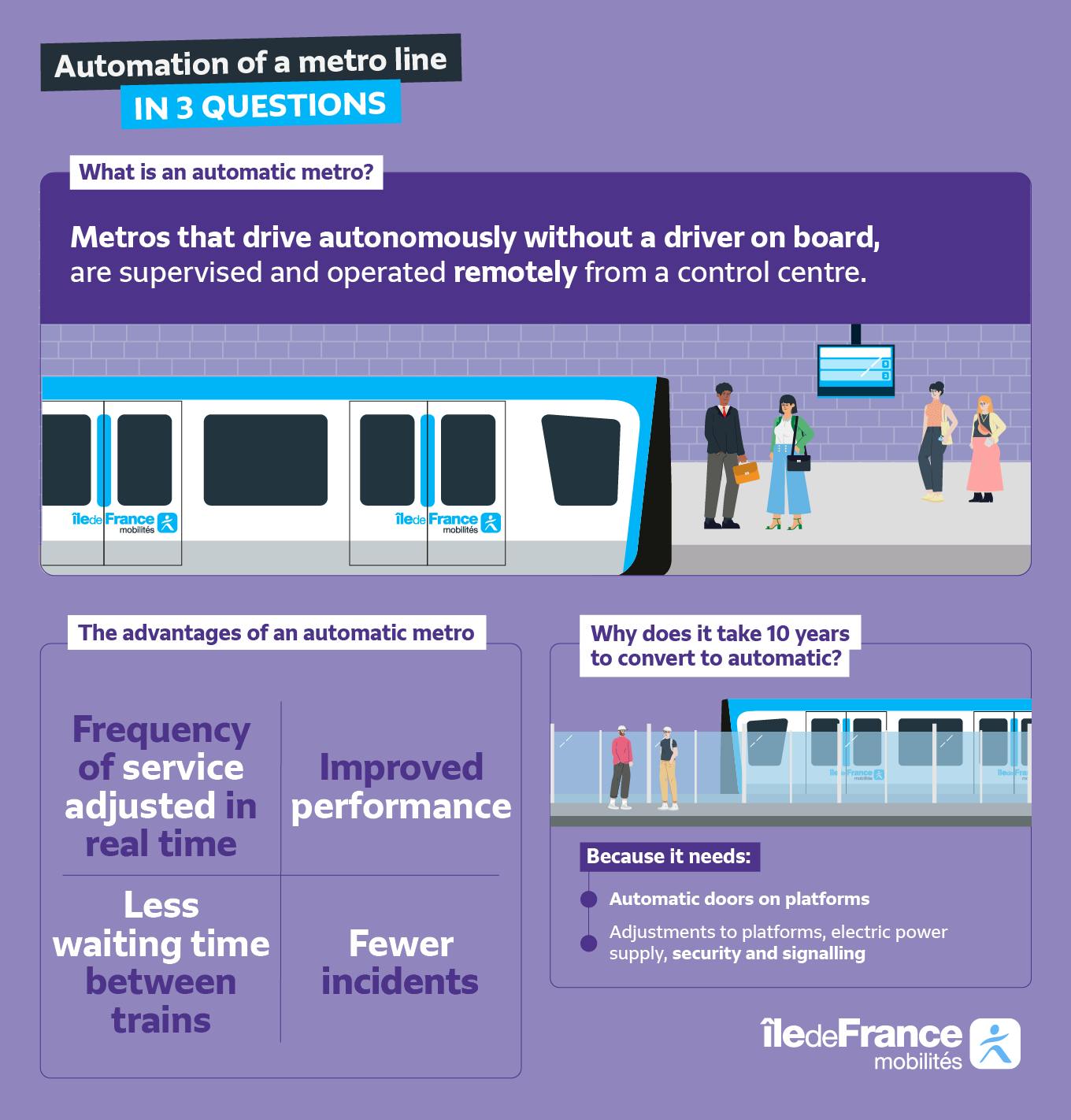
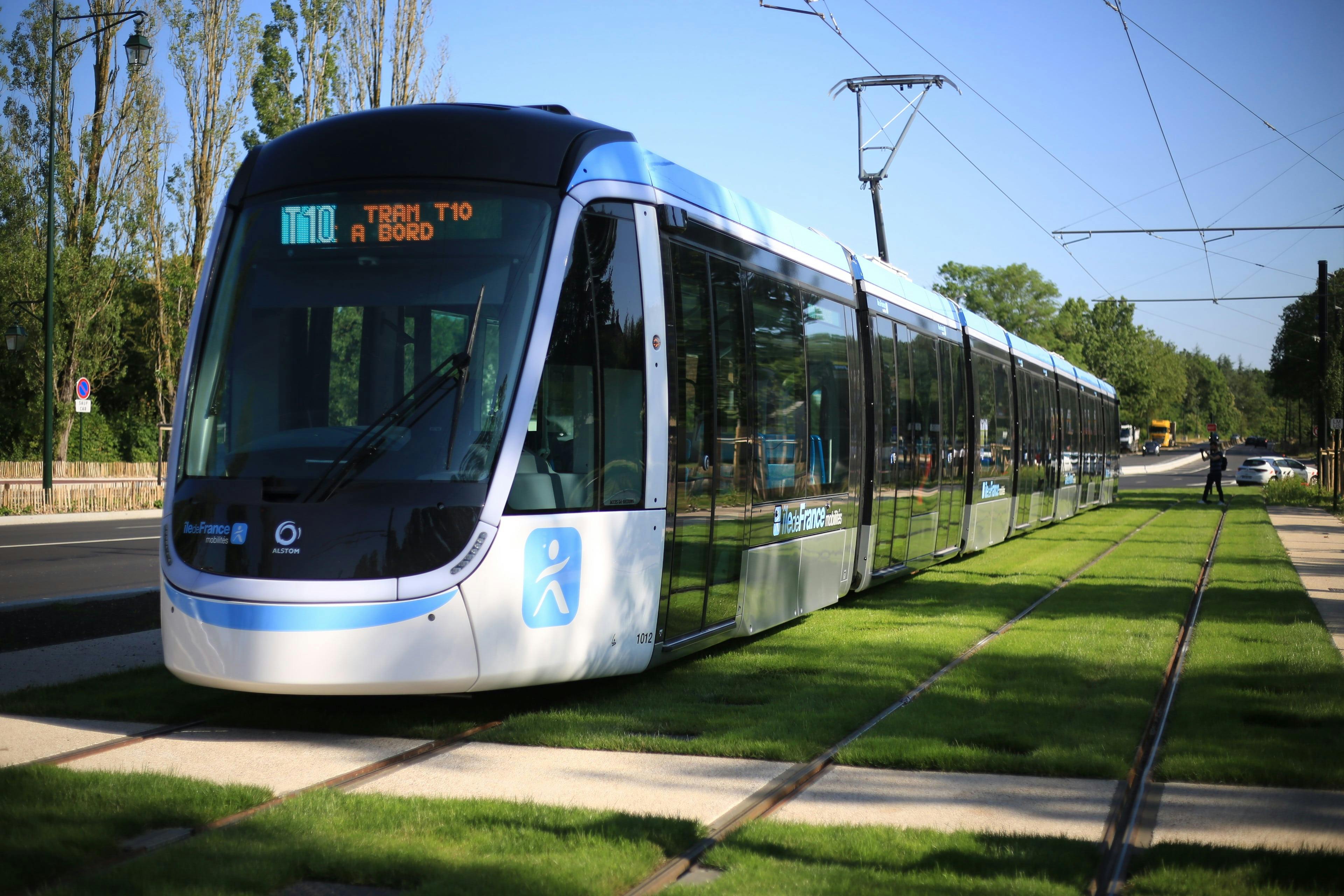
The return of trams to the Paris region
Île-de-France Mobilités is convinced of the many benefits of trams
This mode of transport combines respect for the environment, full accessibility, comfort, as well as continuous service all week long. In less than 20 years, Île-de-France trams now carry over one million passengers per day.
For Ile-de-France residents, the tram lines that crisscross the region mean smoother travel. They save time every day, especially for those travelling from suburb to suburb, avoiding the need to pass through Paris.
By repurposing part of the inner ring road and reusing existing infrastructure to reduce project costs, trams and tram-trains further enhance the public transport on offer for Ile-de-France residents.
The advantages of the tram (and tram-train)
- Eco-friendlly
- Low impact mobility
- Fully accessible
- Comfortable
- Reuse of disused parts of the national rail network when possible
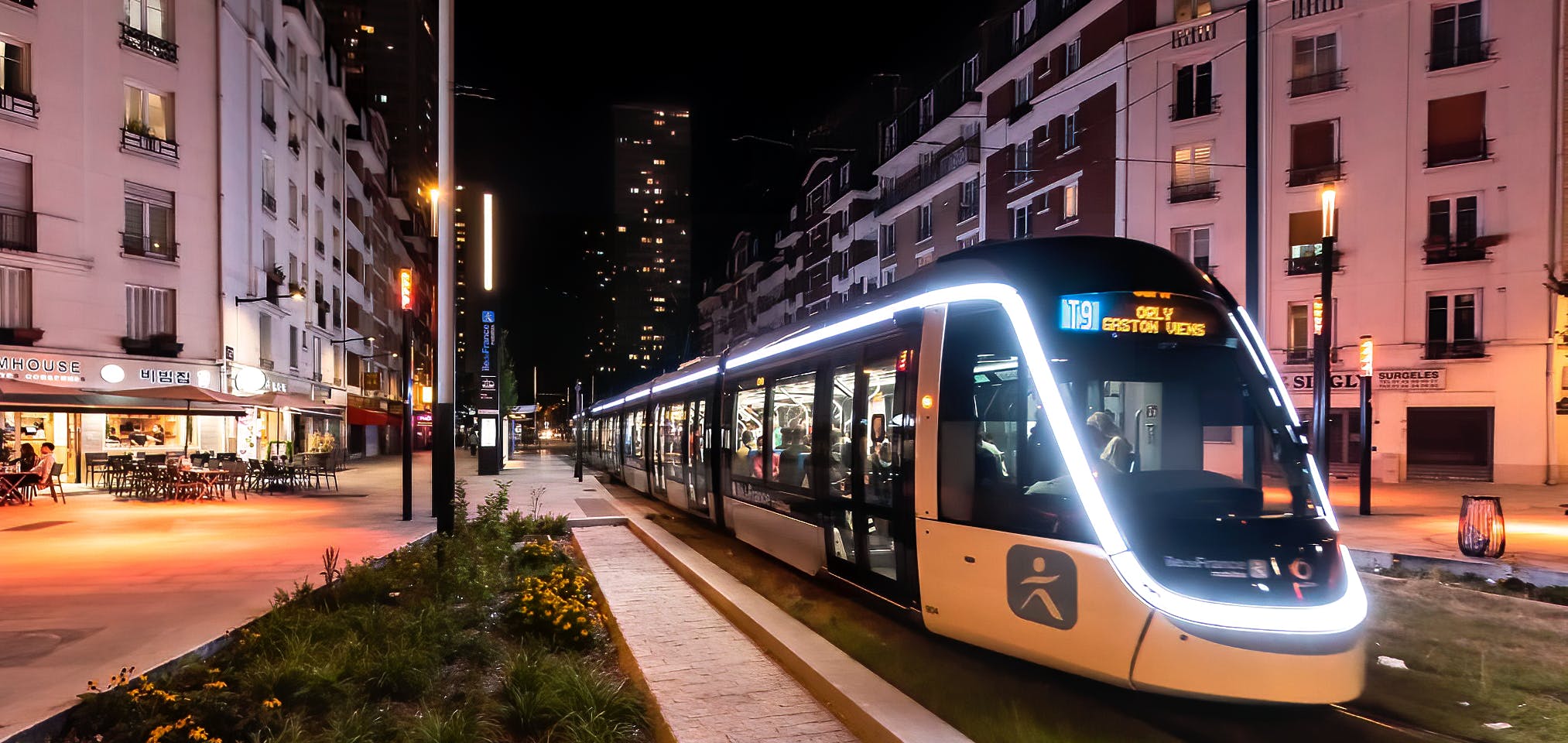
T9: the tram that lights up the city
Since its inauguration in April 2021, the T9 tram has carried more than 70,000 passengers every day between Paris and Orly. The T9 operates 22 accessible, comfortable and safe trams, but it also has an exterior design and a special lighting signature which were chosen by the residents of the Paris region.
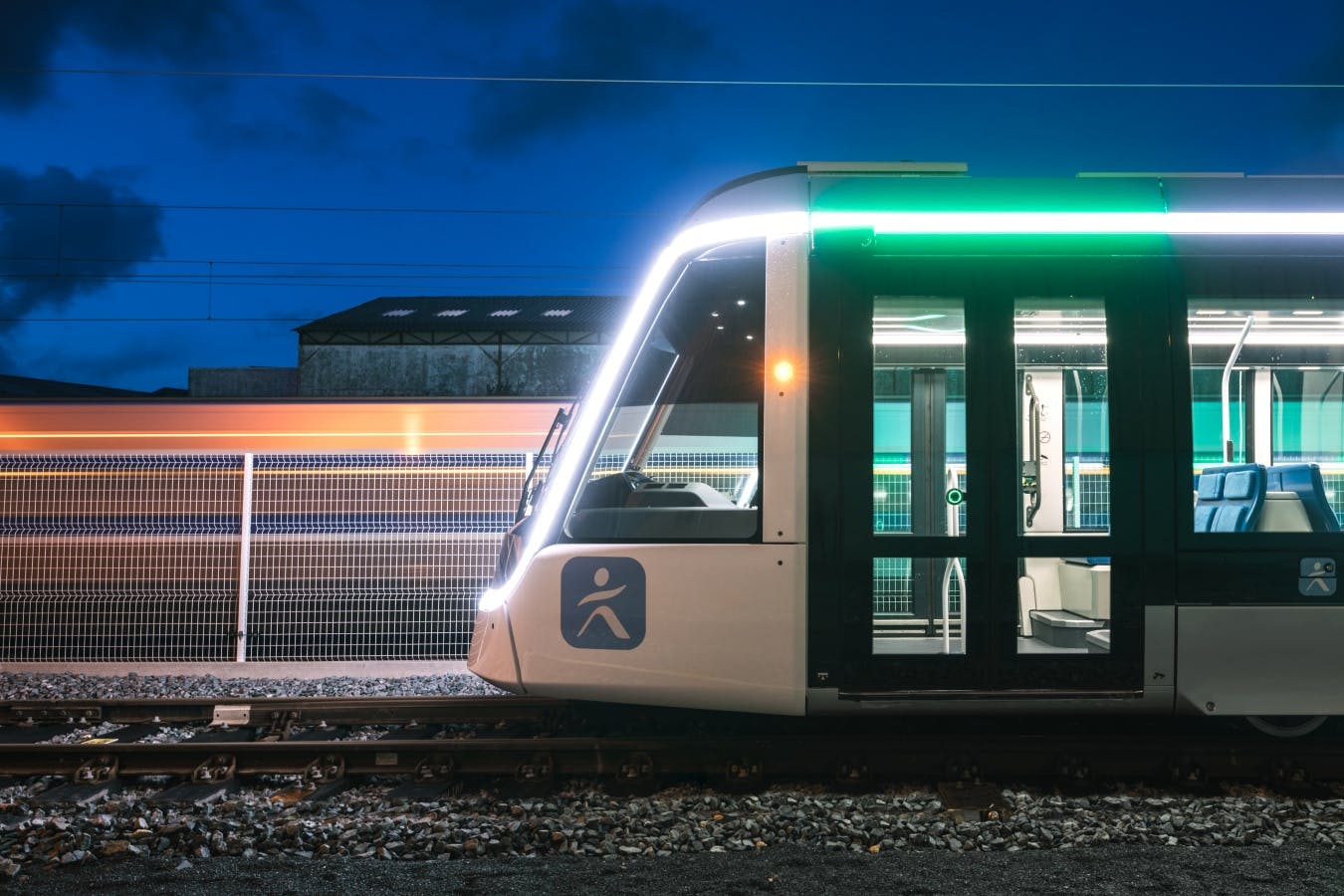

Public transport in the Paris region: a new design
When it come to the design of new vehicles, Île-de-France Mobilités anchors transport improvements on the principles of comfort, ergonomics and sturdiness.
Each vehicle is designed to improve the travel experience, by offering different zones, air conditioning, optimized lighting and comfortable seating, to make journeys as pleasant as possible, while transporting a maximum number of passengers.
Air conditioning for increased comfort
Faced with global warming and because passenger comfort is at the heart of its concerns, Île-de-France Mobilités is increasing the application of air conditioning on its rolling stock - with all new vehicles now equipped.
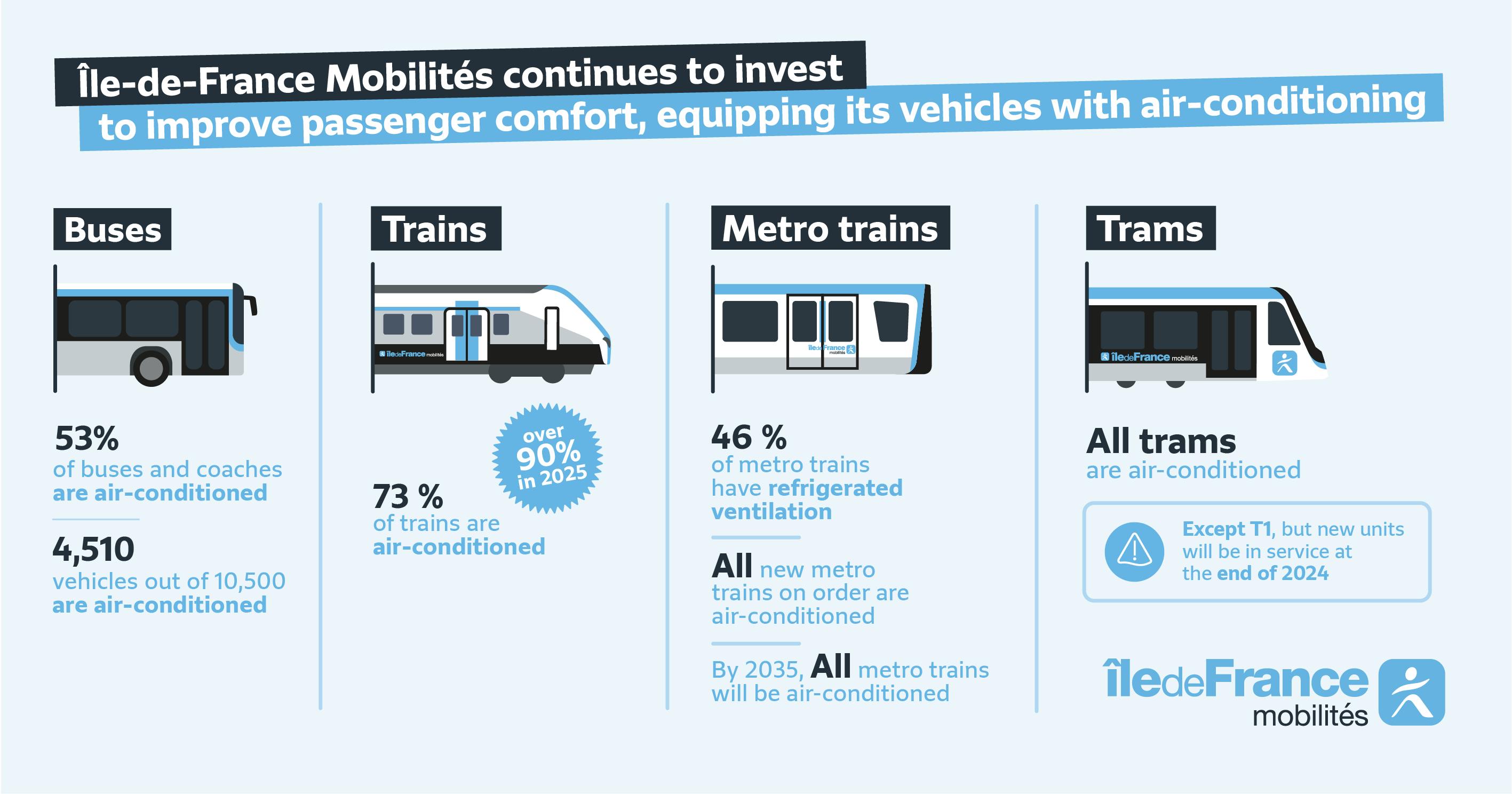
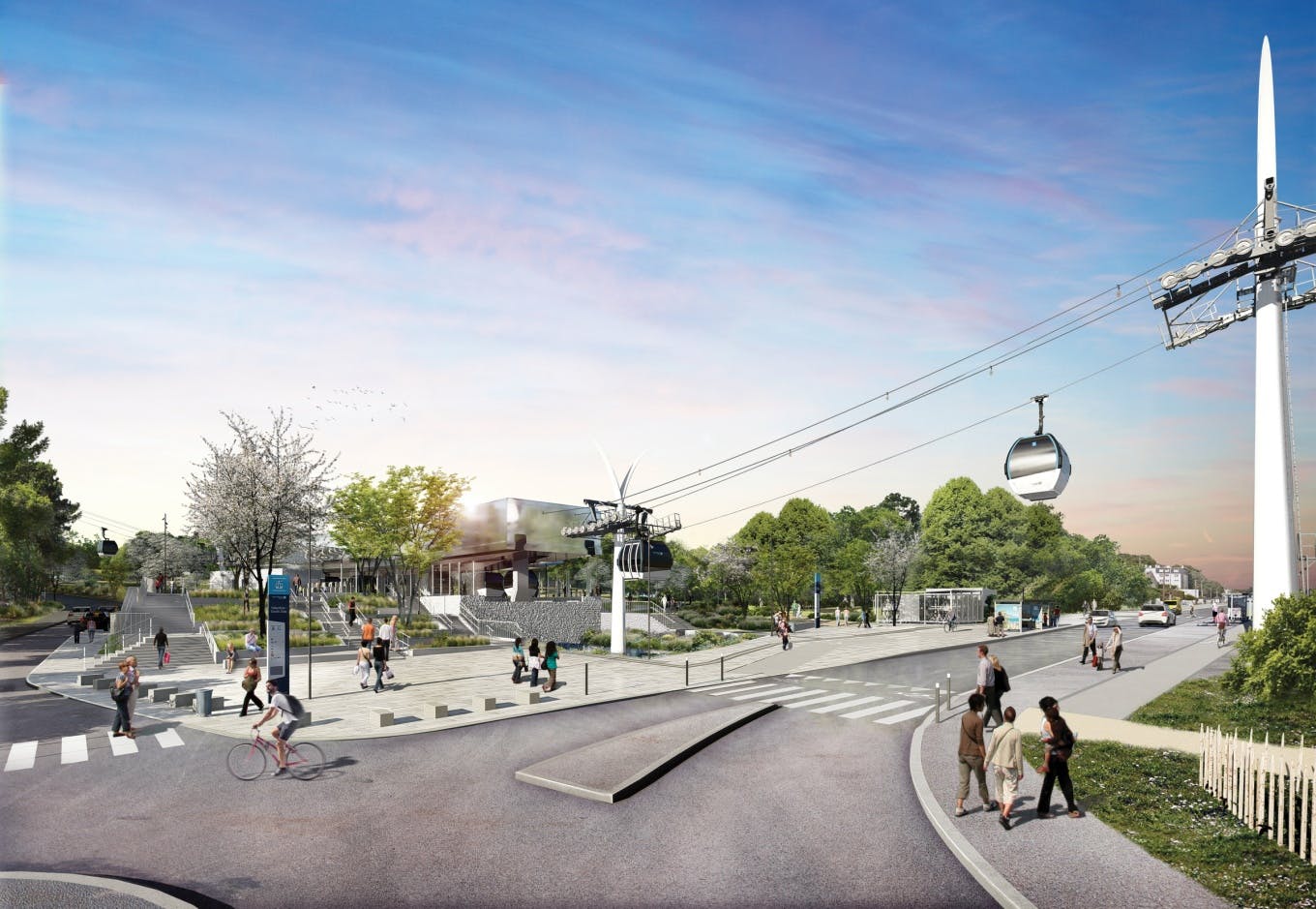
Thinking innovative mobility
Île-de-France Mobilités is constantly thinking about new modes of mobility. Bi-articulated buses or cable cars: the future of travel is being built in the Paris region!
Tzen 4, Cable car C1: a look at two innovative new solutions
The mission of Île-de-France Mobilités is to offer Paris region residents greater reliability, improved comfort and modes of transport that respond in an innovative way to their specific needs.
For example, the Tzen 4 bus, which will equip what will become the busiest route in the outer suburbs, is a 24-metre, fully electric bi-articulated bus. Its ultra-fast ground charging is a world first.
Cable car C1, it will be the first in the Paris region. A unique mode of transport chosen to solve very complex problems in the area it will serve.
Tzen 4: bigger, cleaner
At 24 metres long, bi-articulated (three connected sections) and fully electric, the future Tzen 4 BRT bus will benefit from ground recharging in just five minutes. A world first.
Running between Viry-Châtillon and Corbeil-Essonnes, the Tzen 4 will carry 40,000 passengers per day.
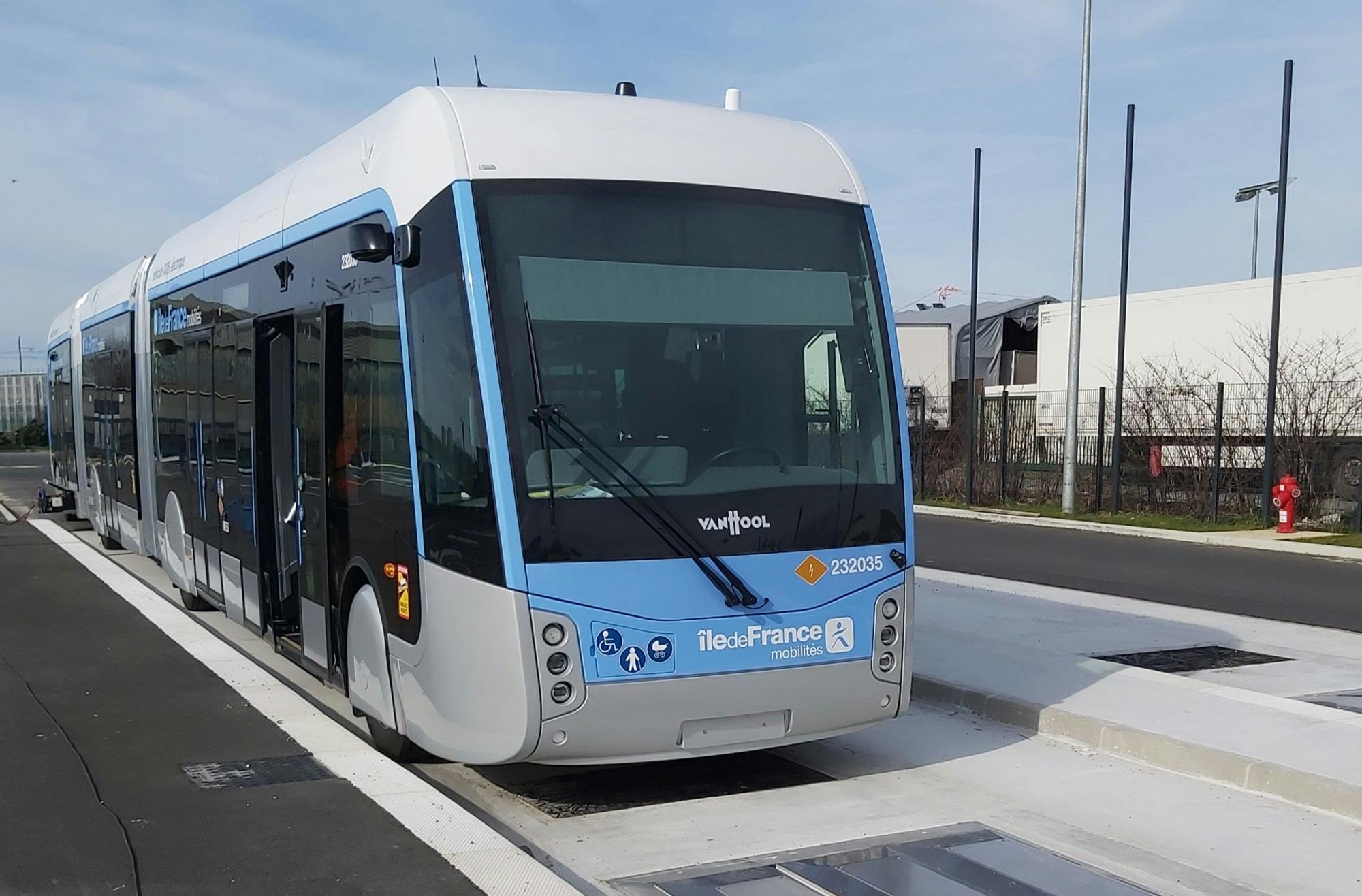
Cable car C1: Paris region from above
The C1 cable car will connect Créteil to Villeneuve-Saint-Georges via Limeil-Brévannes and Valenton along a route covering 4.5 kilometres and five stations, with a frequency of under 30 seconds during peak hours.
The innovative solution of cable car transport will provide a concrete response to the daily travel difficulties of those who live in this area by connecting them to Line 8 of the metro. Ultimately, the C1 cable car will serve more than 20,000 residents and several employment zones.
